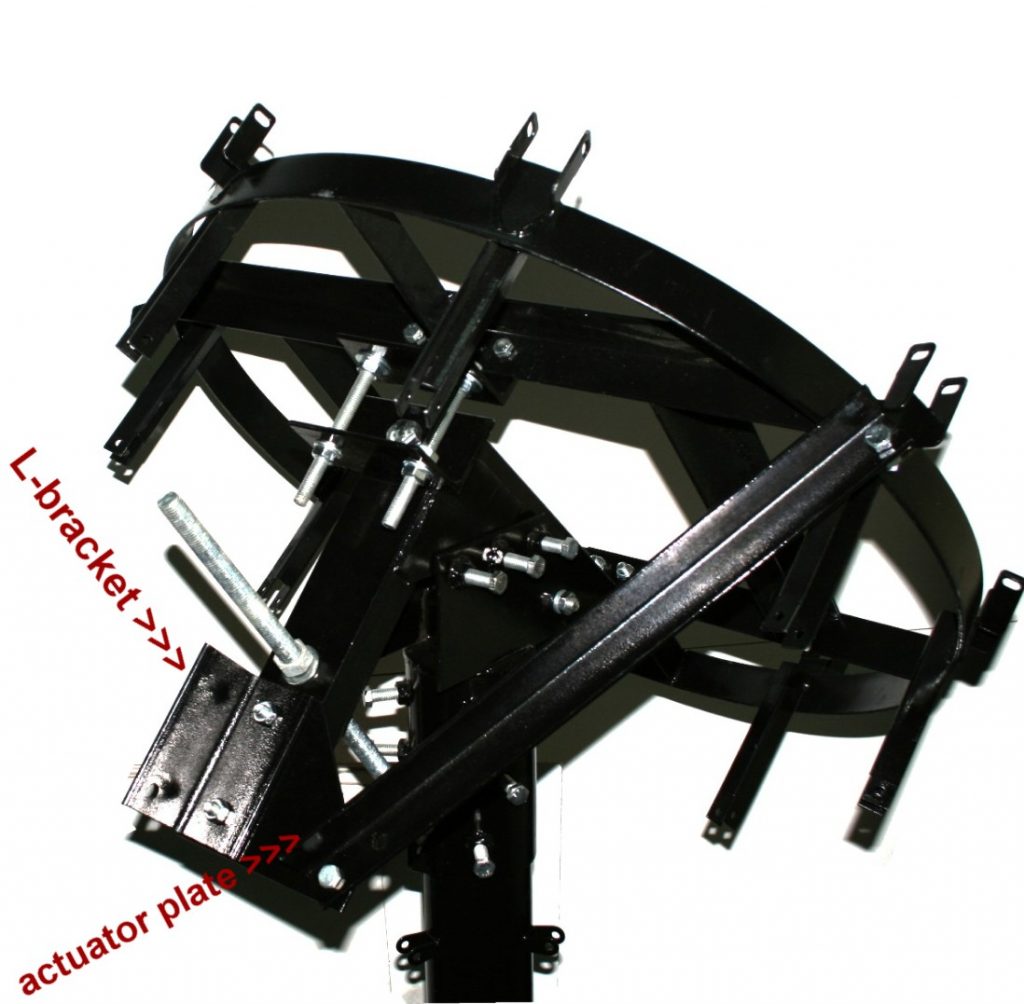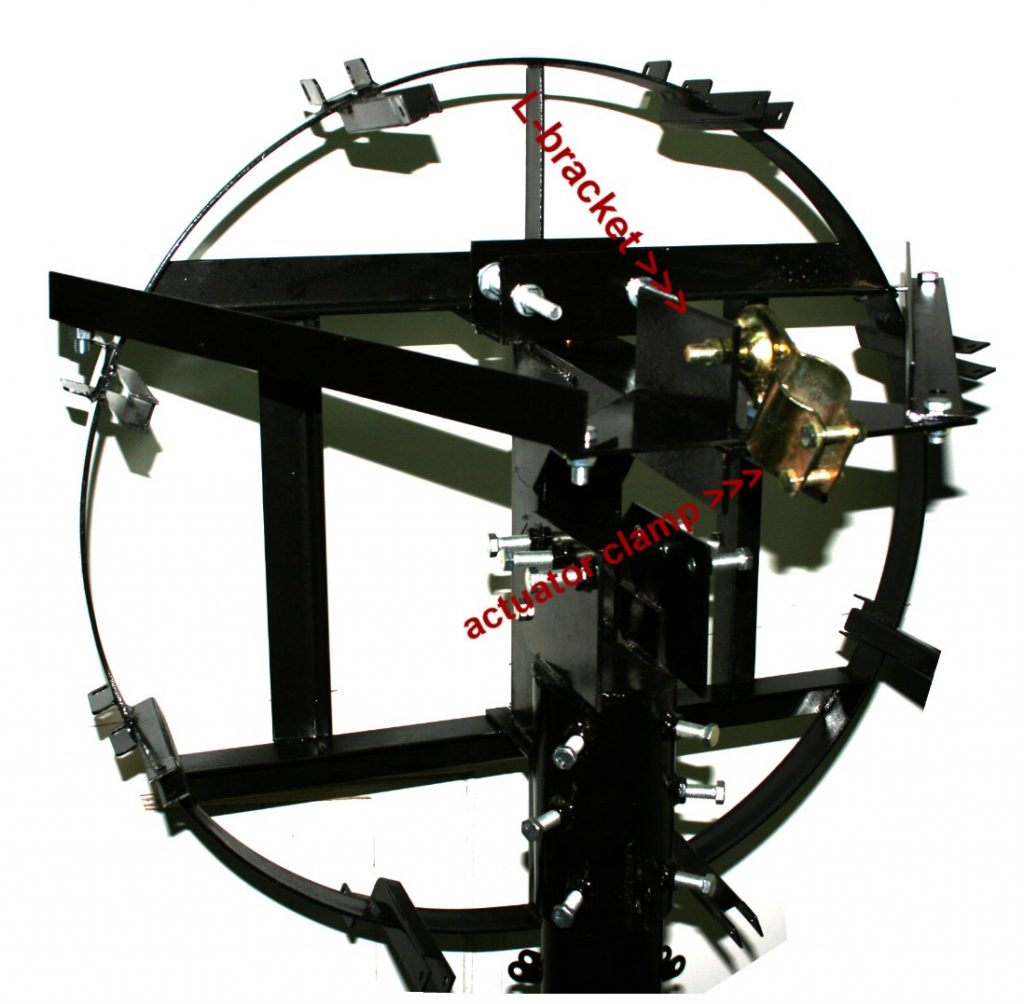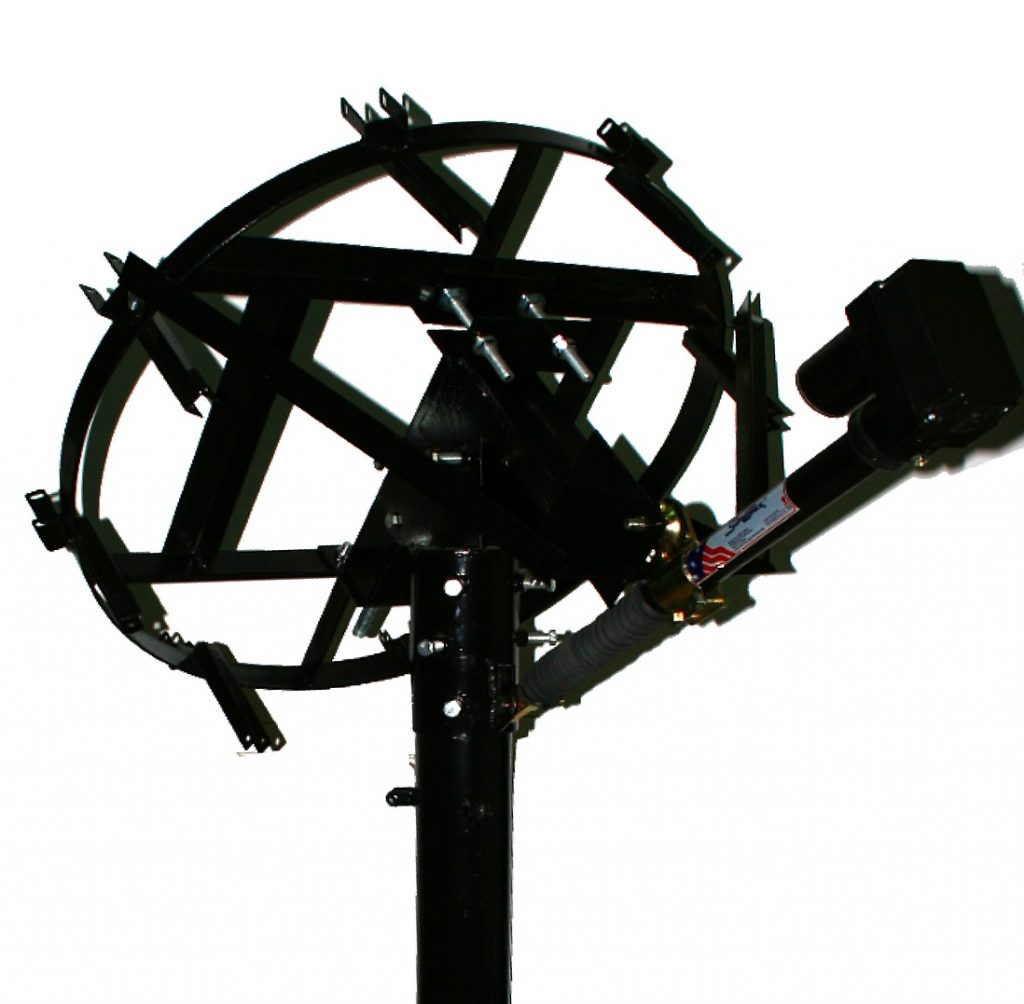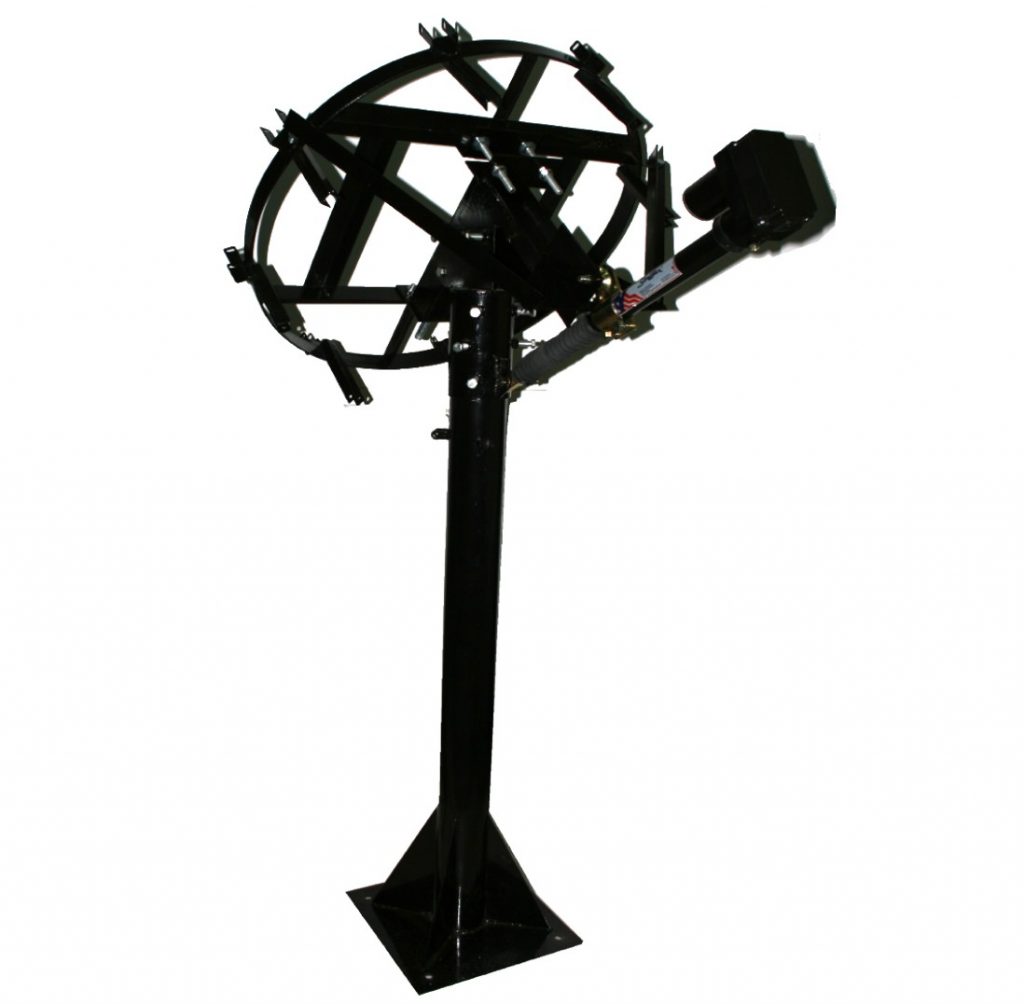If you purchased a consumer C Band mesh dish from us beginning in early 2018, your polar mount probably came with an “L-bracket”. Many of you have been asking us what this part is for?
Quite simply, this part bolts on the dish arm (and on top of the actuator plate) as shown below and allows you to add an actuator arm for elevation control.

The clamp of the actuator bolts to the L-bracket hole and the end of the actuator jack bolts to the collar mount where the threaded rod usually goes.



Why would I need elevation control on a polar mount dish? Good question. It turns out that a polar mount for a satellite dish can only approximately track the Clarke Belt. As you probably know, the elevation (in degrees) is usually set to the latitude of the dish location, thereby making the polar-axis of the mount parallel to the Earth’s polar axis. Then a few degrees of declination is added to tilt the mount slightly downwards so it sees the Clarke Belt.
Unfortunately, unless the dish is located at one of the Earth’s poles (i.e. North or South) or at the equator, the declination required for precisely tracking the Clarke Belt will vary ever so slightly from satellite to satellite. So instead of tracking a perfect circle (i.e. the Clarke Belt) at the equatorial plane, you end up tracking an ellipse that only approximates a circle. The difference is greatest between the zenith and horizon satellites. This is why a polar mount dish can never perfectly track the geostationary satellite arc. If the declination is set accurately for the horizon satellites (i.e. the ellipse and circle intersect at this point), then one finds this same declination is slightly off for the zenith satellites (the ellipse and circle do not quite touch). Most people get around this problem by adding or subtracting a bit of elevation to the mount so it is no longer exactly equal to their latitude. This makes the ellipse a better fit for the circle, but still not perfect. Remember, elevation adjustments have the same effect as declination adjustments for zenith satellites, but little effect for horizon satellites. This works well for most people, but if you want more precise tracking of the Clarke Belt, you need to either motorize the declination or elevation. This lets you change the shape of the ellipse so it touches the circle for every satellite. Makes sense?
Of course if your pole is not perfectly plumb or your dish is not aimed exactly due south, the ellipse you track will be a really bad approximation to the Clarke Belt circle. Again, a bit of motorization on the elevation can rectify the problem and you don’t have to go outside every time and make adjustments manually.
So this is the purpose of the mysterious “L-bracket” included with your dish. If you want to motorize the elevation for your dish, we recommend the following actuator sizes:
13.5ft / 12ft Antenna: 18″ Heavy-Duty Actuator
10ft / 8ft Antenna: 12″ Heavy-Duty Actuator
In the future, you will be able to purchase an azimuth motor for your dish, which will rotate it on the pole. You will then have an AZ-EL dish mount, which is the most precise dish mount possible (pin-point accuracy) and used by the satellite professionals!


 )
)